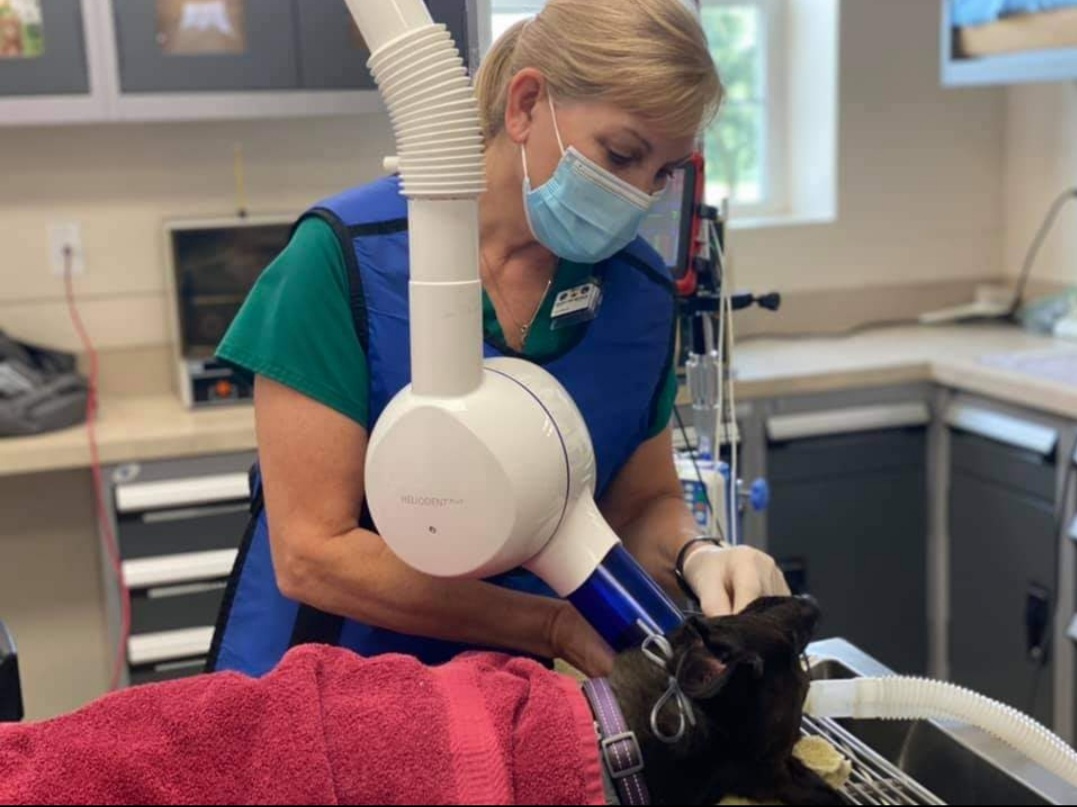Does your pet’s bad breath clear a room? Have you noticed they are more reluctant to chew dry food or hard treats? These could be signs of dental disease, which is already present in up to 85% of all pets age 3 or older. Dental disease in pets is one of the most common medical conditions that veterinarians see, because pet owners can easily miss the signs. Our team at Red Oak Animal Hospital shares do’s and don’ts to prevent periodontal disease and keep your pet’s mouth healthy.
DO brush your pet’s teeth daily
Periodontal disease refers to gum inflammation and tooth damage caused by plaque and tartar buildup on your pet’s teeth. If you do not brush your pet’s teeth regularly, the plaque hardens into tartar and can erode tooth roots and surrounding structures and cause severe pain. In addition, dental disease can result in chronic inflammation and organ damage if bacteria in the bloodstream travel to the heart and kidneys. By brushing your pet’s teeth daily, you can reduce the amount of oral plaque and bacteria and help keep dental disease at bay. Use these tips to brush your pet’s teeth at home:
- Purchase pet-friendly toothpaste and toothbrush — The fluoride contained in human toothpaste can harm your pet if swallowed, so purchasing toothpaste made specifically for pets is critical. Pet toothpastes also come in a variety of tasty flavors that make the toothbrushing process more enjoyable. Use a finger brush for hard-to-reach areas in pets with small mouths and soft-bristled children’s toothbrushes for large pets.
- Choose a quiet spot — Select a quiet place for brushing your pet’s teeth so you won’t be interrupted and to ensure the experience is calm and positive, and that your pet is comfortable—and your fingers stay intact.
- Start slowly — Before brushing your pet’s teeth, offer them a taste of the toothpaste and gently wipe some under their lip to get them used to feeling toothpaste on their teeth. After your pet accepts your finger swiping along their teeth and gums, offer them a toothbrush with a small amount of toothpaste.
- Gently brush — Use a gentle brushing motion on all surfaces, including the back molars, if possible. The inner surfaces facing the tongue are often relatively tartar-free, but can still build up plaque.
- Reward your pet — When finished, praise and reward your pet for a job well done.
DON’T miss your pet’s dental disease signs
Early dental disease signs in pets are easily missed, so you must inspect your pet’s teeth and mouth regularly. The following signs may indicate dental problems:
- Red, inflamed, or bleeding gums
- Gum overgrowth or recession
- Brown, yellow, or gray plaque and tartar buildup on teeth
- Bad breath
- Excessive salivation
- Reluctance to chew dry food or hard treats
- Avoiding being groomed or petted on the head
- Chewing on one side of the mouth
- Pawing at one side of the mouth
- Blood-tinged drool
If you recognize these signs, schedule an appointment for your pet so our team can assess their dental health, and address any problems.
DO ensure your pet receives professional dental care
In addition to daily brushing, pets require regular check-ups and cleanings to maintain good oral health and prevent problems, and a close examination of the teeth is a crucial part of your pet’s annual wellness exam. We may recommend a professional cleaning and dental X-rays to evaluate the 60% of each tooth that hides under the gum line and cannot be directly visualized. A complete professional pet teeth cleaning will include:
- Scaling tartar from the tooth surface, above and below the gum line
- Polishing each tooth to remove microscopic etchings created by scaling, where bacteria can adhere
- Probing the gum line for pockets that indicate periodontal disease
- Irrigating below the gum line to flush away bacteria and debris
- Rinsing with an antimicrobial solution
DON’T let your pet chew hooves, antlers, or bones

Not all chew toys are created equal, and some do more harm than good. Dental chews loosen tartar buildup, but hard items, such as hooves, antlers, and bones, can wear down your pet’s enamel or fracture their teeth. Look for dental products that carry the Veterinary Oral Health Council (VOHC) Seal of Approval, which guarantees the product will slow plaque and tartar accumulation.
Dental disease is a serious—but preventable—disease. You have the power to maintain your pet’s dental health and avoid severe health conditions by tackling your pet’s tough tartar and oral bacteria with a thorough professional dental cleaning. Contact our team at Red Oak Animal Hospital to schedule an appointment.









Leave A Comment